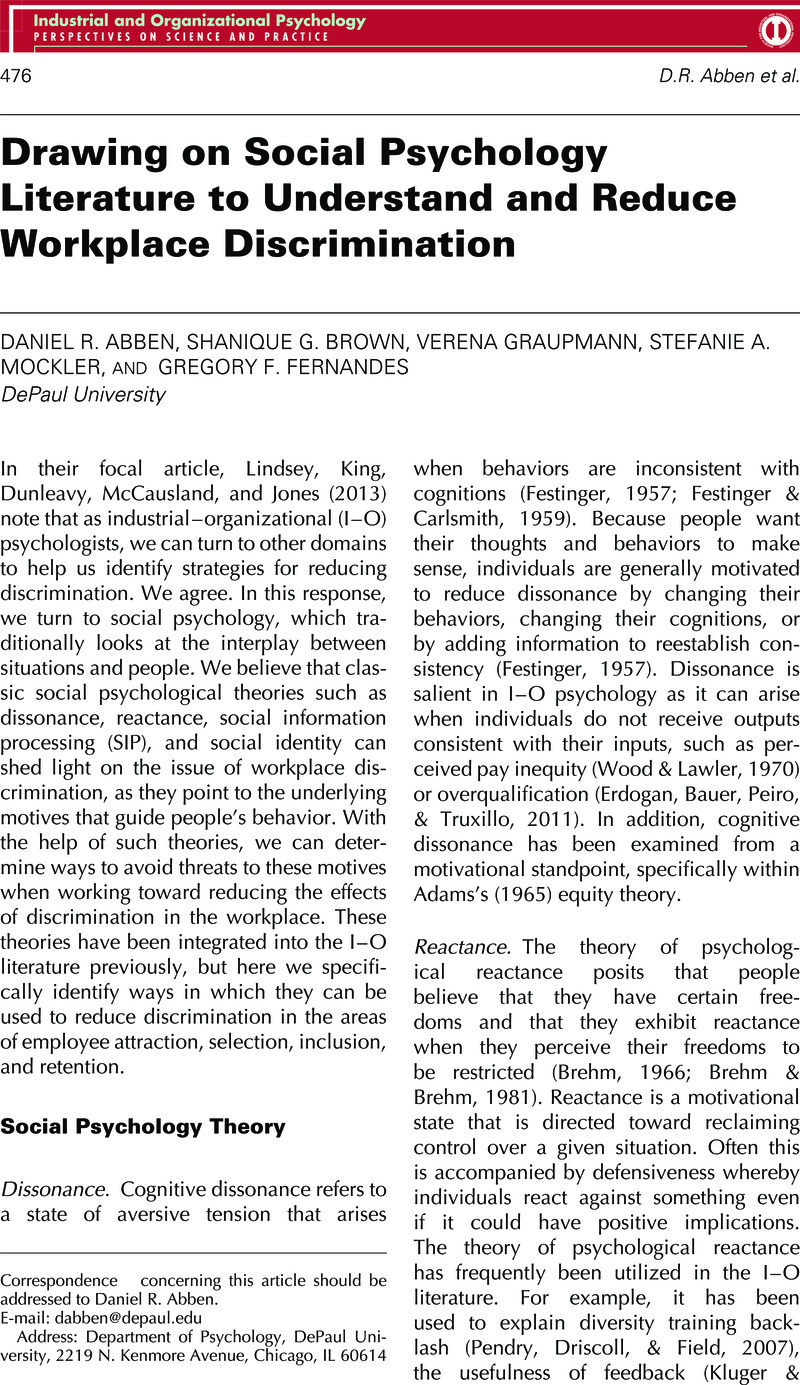Crossref Citations
This article has been cited by the following publications. This list is generated based on data provided by Crossref.
Macdonald, Jamie L.
and
Levy, Sheri R.
2016.
Ageism in the Workplace: The Role of Psychosocial Factors in Predicting Job Satisfaction, Commitment, and Engagement.
Journal of Social Issues,
Vol. 72,
Issue. 1,
p.
169.
Sergent, Kayla
and
Stajkovic, Alexander D.
2019.
Prime and Prejudice.
Applied Psychology,
Vol. 68,
Issue. 3,
p.
391.
Palumbo, Rocco
2024.
Turning Into Disengaged Public Servants: Examining the Effects of Discrimination on Work Engagement.
Public Organization Review,



